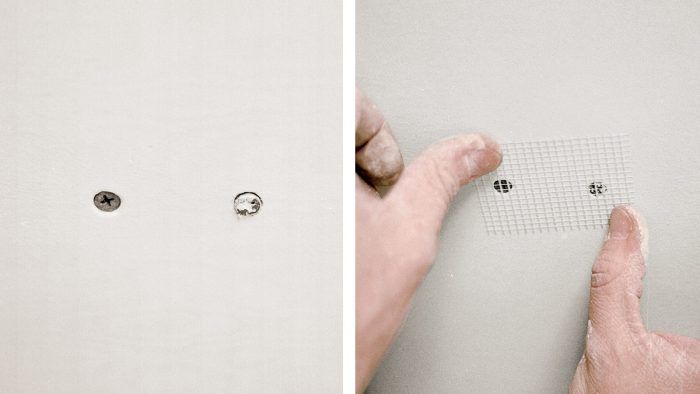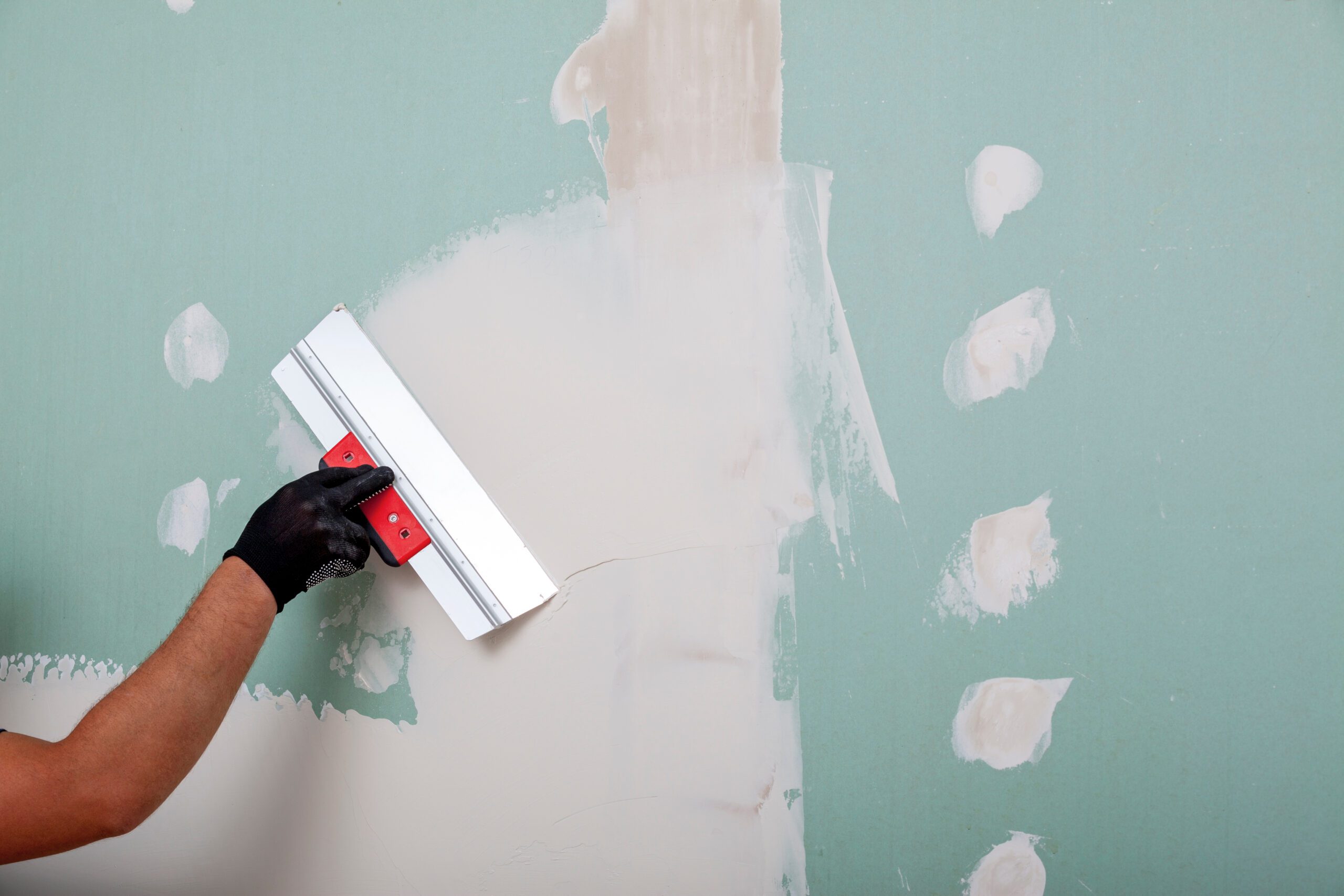Drywall contractors provide attention to detail that supports every Interior Painting project.
Necessary Tips for Effective Drywall Repair Service and Installation Methods
Effective drywall repair work and installation needs a cautious technique. Recognizing the kinds of drywall and having the right tools is important. Proper techniques and accurate dimensions can considerably affect the result. Numerous ignore essential actions like taping and fining sand, which can make or break the last look. As tasks proceed, usual obstacles might emerge that call for interest. Discovering these ideas can cause a more effective and sleek surface.
Recognizing Various Kinds of Drywall
Recognizing the different types of drywall is crucial for any kind of successful repair service or installment task. Drywall, frequently called gypsum board, is available in numerous ranges tailored for specific applications. Standard drywall is the most widely used type, suitable for basic indoor walls and ceilings. Moisture-resistant drywall, typically environment-friendly in color, is designed for areas vulnerable to humidity, such as washrooms and cooking areas. Fire-resistant drywall, usually colored pink or purple, is engineered to withstand greater temperature levels and is usually made use of in garages or near heaters. In addition, soundproof drywall helps in reducing noise transmission, making it suitable for multi-family homes or taping workshops. Specialty drywall, like concrete board, is used in damp areas like showers or bathtub borders. Understanding these kinds aids in selecting the ideal material for each and every project, guaranteeing durability and performance in fixings or brand-new installations.
Vital Tools for Drywall Repair and Setup
Having the right tools is essential for efficient drywall repair service and setup. A top quality utility blade is critical for cutting drywall sheets precisely. A drywall T-square helps ensure straight edges, while a taping knife is required for using joint substance efficiently over seams. Furthermore, a drywall saw permits eliminating damaged sections or fitting drywall around components.
For hanging drywall, a power drill with drywall screws is crucial, as it allows quick and protected installation. A level is also vital to validate that the drywall is straight and effectively straightened. Once it has dried out, a sanding block or post sander is important for smoothing out joint compound. A gauging tape is vital for precise dimensions, avoiding waste and ensuring a correct fit. Furnished with these tools, people can tackle drywall projects properly, causing professional-looking results.
Step-by-Step Overview to Repairing Holes and Cracks
When dealing with openings and fractures in drywall, having the right tools and materials is necessary for a successful repair. This guide outlines the required products and gives a clear, step-by-step procedure to successfully bring back the surface area. Comprehending these elements will aid assure a smooth surface and durable outcomes.
Tools and Materials Needed
A well-equipped toolkit is vital for efficient drywall fixing and installation. Secret devices include an energy blade for cutting drywall, a tape measure to ensure precise sizing, and a drywall saw for larger holes. A putty blade is crucial for applying joint substance efficiently, while a fining sand block or post sander assists accomplish a seamless surface. For patching, a roll of fiberglass mesh tape or paper tape is essential to reinforce joints. Additionally, a drill and screws are required for protecting new drywall items. Crucial products are composed of joint substance, primer, and paint to complete the repair. Having these tools and materials available ensures a smoother, a lot more reliable fixing process, producing professional-looking results.
Repair Service Refine Actions
Fixing holes and cracks in drywall requires a methodical technique to ensure a seamless surface. The area surrounding the damages must be cleansed extensively to eliminate dirt and debris. Next off, for little fractures, a putty blade is utilized to apply a joint substance equally over the area. For bigger openings, a patch is essential; the damaged section is eliminated, and a brand-new piece of drywall is fitted in place, secured with screws. When the patch is in position, joint substance is used to blend the sides. After drying out, sanding the location smooth is important. The repaired surface ought to be keyed and repainted to match the surrounding wall, ensuring a low-profile repair service.
Strategies for Putting Up Drywall Panels
Installing drywall panels needs mindful planning and accurate execution to ensure a professional and smooth coating. First, it is important to gauge the wall surface space properly and reduce the panels to fit, ensuring that they line up with the studs. Positioning the panels flat is generally recommended, as this can boost the structural stability and lower the variety of seams.
Utilizing drywall screws, installers must protect the panels every 16 inches along the studs, making certain a company hold. It is essential to stay clear of overdriving the screws, which can harm the paper surface. For corners and edges, making use of an energy knife permits for tidy cuts and a tight fit.

Ending Up Touches: Taping, Mudding, and Fining sand
When the drywall panels are safely in place, the following important step entails the complements of taping, mudding, and sanding. Taping is very important for creating a seamless shift in between panels and hiding joints. A quality drywall tape, either paper or fiberglass fit together, need to be used over the joints, ensuring it adheres effectively to the mud that will be used next.
Mudding, or using joint compound, adheres to the taping process. This compound loads voids and ravel the surface area. A very first coat ought to be used kindly, feathering the edges to visit this site right here mix with the drywall. After the preliminary layer dries, succeeding layers may be required for a perfect surface.
Fining sand is required to attain a smooth surface. A fine-grit sandpaper must be utilized to carefully smooth out any imperfections. Treatment must be required to prevent over-sanding, which can harm the drywall - Interior Painting. Appropriately implemented, these finishing touches create a professional look prepared for paint
Tips for Preserving Your Drywall After Setup
Preserving drywall after installation is crucial to preserving its look and structural honesty. Routine cleansing is necessary; dirt and dirt can gather, so gentle discover here cleaning with a damp towel is suggested. Property owners must additionally examine for any kind of indicators of moisture or mold, specifically in high-humidity locations like restrooms and kitchens. If any kind of damages occurs, it is very important to address it promptly to stop further issues.
Utilizing furniture pads can help protect against scrapes or dents from hefty items. Additionally, painting the drywall with a high-quality, washable paint gives an additional layer of security and makes future cleansing much easier. Avoid making use of abrasive cleansers or devices, as these can damage the surface area. Preserving a steady indoor climate with ideal moisture levels will assist stop cracking or warping over time. By complying with these tips, one can assure that drywall stays in exceptional condition for years ahead.
Frequently Asked Concerns
The Length Of Time Does Drywall Require To Totally Dry After Installation?

Can I Mount Drywall Over Existing Drywall?
Yes, drywall can be set up over existing drywall, yet it is important to assure the underlying surface area is safe and adequately prepared. This technique can enhance insulation and lower setup time, though it may include weight.
What Is the Best Method to Soundproof Drywall?
The very best way to soundproof drywall includes making use of specialized soundproofing products, such as resilient channels, acoustic caulk, and sound-dampening drywall. These techniques effectively decrease audio transmission in between spaces, enhancing total acoustic efficiency in living spaces.
Just how Do I Choose the Right Drywall Thickness?
To choose the right drywall density, consider the application and location. Standard domestic wall surfaces usually use 1/2 inch, while ceilings or specialized recommended you read locations may call for 5/8 inch for additional strength and soundproofing capacities.
Exist Eco-Friendly Drywall Options Available?
Yes, eco-friendly drywall alternatives are readily available. These consist of items made from recycled products, plaster boards with low unpredictable natural compounds (VOCs), and those using lasting production procedures, providing environmentally-conscious choices for building and renovation jobs.
Having the right tools is crucial for efficient drywall fixing and installment. For hanging drywall, a power drill with drywall screws is indispensable, as it enables protected and quick installation. Trick devices consist of an energy blade for reducing drywall, a tape action to assure exact sizing, and a drywall saw for bigger holes. Yes, drywall can be set up over existing drywall, however it is important to guarantee the underlying surface is protected and effectively prepared. The best method to soundproof drywall entails making use of specialized soundproofing products, such as resilient channels, acoustic caulk, and sound-dampening drywall.